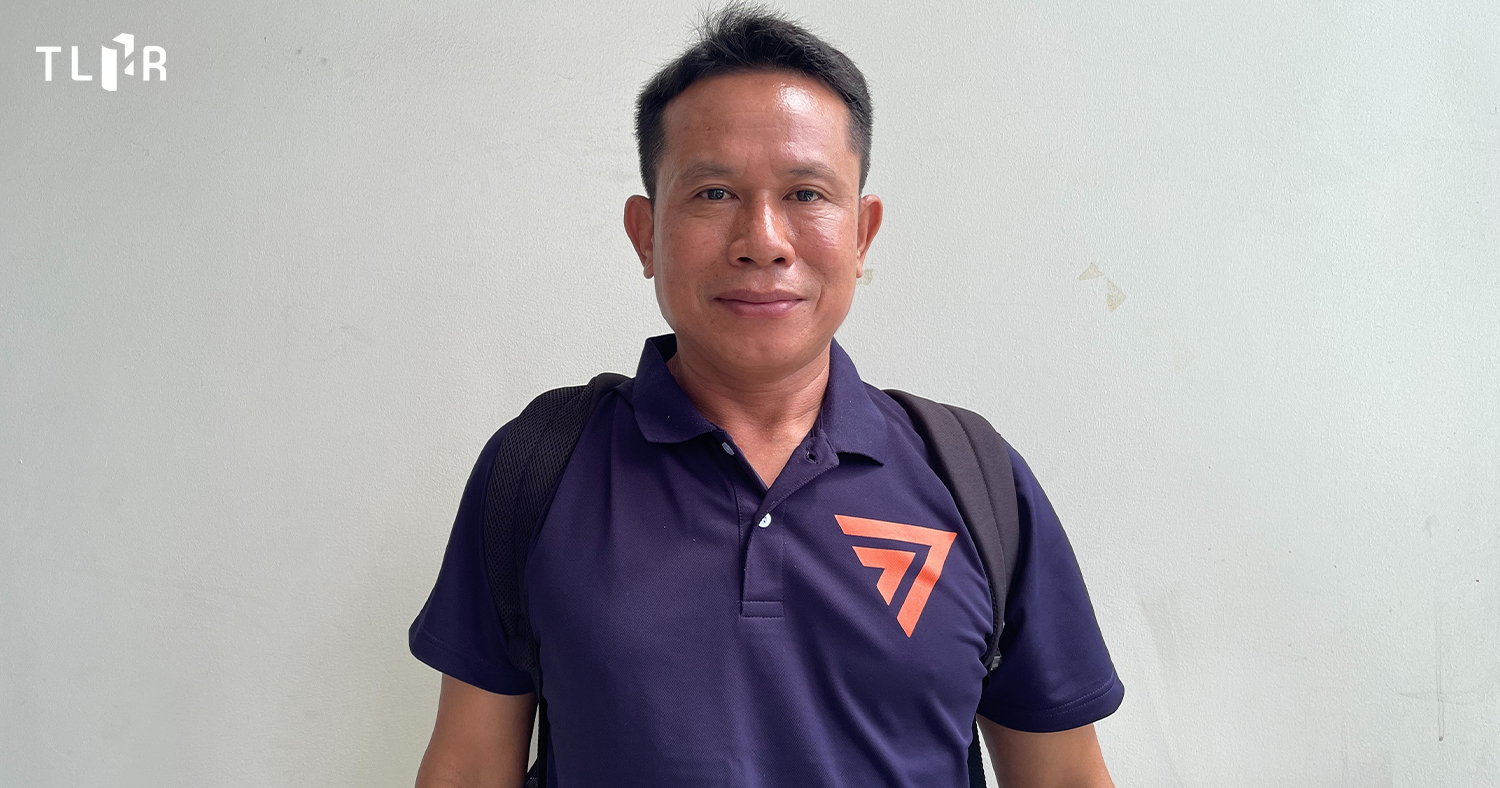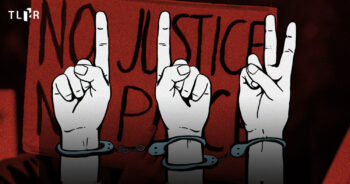On 6 September 2022 at 9.30 AM, Adisak Sombatkam, a former Future Forward Party MP and one of the defendants in the #19September protest case, along with his lawyer, travelled to the Court of Appeals to hear the verdict in his contempt of court case. Adisak was accused of rising from the bench in the courtroom to tap a correctional officer on the shoulder as the officer was blocking his view of the trial on 8 April 2021.
The Court of First Instance imposed a fine on Adisak, finding that his conduct caused disorder in the courtroom.
On 2 July 2021, the Court of First Instance passed a sentence of a fine of 500 Baht and warned the accused against any inappropriate behavior or act within the court’s premises in the future. The Court noted that Adisak had the intention to use force on Pairote Manadsila, a correctional officer, in a manner that was inappropriate and disrespectful, and did so while the trial was in progress. The act was thus deemed highly inappropriate.
Adisak’s act was considered an inappropriate behavior that occurred within the premises of the court, an institution charged with administering justice to the public. The public who enters the court’s premises should have the confidence in their safety, that they will not be subject to any forms of abuses. This is especially so with respect to the correctional officer who was tasked with accompanying the inmates pertaining to the case. The behavior was also regarded as an act causing disorder in the courtroom in violation of the offense of contempt of court under the Criminal Court’s Rule on Maintaining Order Within Court Compound B.E. 2564 (2021) dated 17 March 2021.
Hence, the Court found the accused guilty of contempt of court under Section 31(1) of the Civil Procedure Code in conjunction with Section 15 of the Criminal Procedure Code.
- The Court set the fine of 500 Baht in Adisak’s case for tapping the warder, who was blocking his view of the trial, on the shoulder, reasoning that the act was inappropriate and disrespectful.
Nevertheless, the lawyer lodged an appeal against the said decision on 20 October 2021. The Court set the date for the reading of the verdict on 6 September 2022.
The Court of Appeals reversed the decision of the Court of First Instance, stating that the act of tapping the officer on the shoulder was simply to notify him. The defendant was defending his fundamental right to observe an open trial.
At 10.00 AM, the Court read the verdict, which is summarized as follows. The case took place during a witness/evidence examination of the Case No. Or. 287/2564 between the public prosecutor, Penguin Chiwarak, and 21 other individuals on 5 April 2021. The defendants in this case included both those who were released temporarily and those who are detained, with two correctional officers, Mr. Pairote and Mr. Suwan, in charge of the seven detainees.
During the trial, Mr. Pairote and Mr. Suwan were standing between the benches where the detained and released defendants were sitting. This might have blocked the view of the trial for Adisak, in front of whom the officers were standing. The fact that Adisak rose from his seat, tapped Mr. Pairote once on the shoulder, and returned to his seat was merely an act of defending his fundamental right to observe an open and fair trial.
According to the CCTV footage, Adisak walked up to Mr. Pairote and tapped on his shoulder once to signal him to move, without causing his body to budge or any injury as claimed by Mr. Pairote himself. The Court was also able to proceed with the trial without noticing it.
The Court of Appeals reversed the decision of the Court of First Instance to impose a sentence of 500-Baht fine.
Adisak’s Appeal Issues
The request to appeal the decision of the Court of First Instance that Adisak and his lawyer submitted to the Appeals Court can be summarized as follows:
1. Adisak’s act was not intended to cause disorder and give rise to contempt of court.
In the circumstances of this case, Adisak simply used his hand to tap Mr. Pairote once on the shoulder to get his attention, to make him look back at the accused (Mr. Adisak), and to signal him that he was blocking the view of the trial of the accused himself and the other defendants who were sitting behind Mr. Pairote.
The offense of contempt of court entails a criminal penalty, including both fine and imprisonment, both of which are a limitation on individual liberty. As such, it is essential that a strict interpretation is applied to the actual acts of the accused. On the date and time of the incident, it did not appear that disorder had erupted in the courtroom or within the court’s premises, nor a disruption or obstruction had affected to the court’s procedure in any way. The Court was able to proceed with trial in a fair and swift manner.
The video footage shows Adisak rising from the bench, walking up to Mr. Pairote, and returning to his seat. Then, another correctional officer approached the accused and made an inquiry with him. The incident lasted less than one minute, and no chaos ensued. Since the accused did not have the intention and his act was not so serious that it resulted in chaos or disorder in the courtroom or within the court’s premises in a way that would disrupt or affect the trial, it should not be deemed a violation of the Rule of the Criminal Court or contempt of court.
2. The evidence and witnesses of the accuser exhibited reasonable doubts.
2.1 Witness statements
During witness examination, none of the accuser’s witnesses could attest to the fact that the accused had slapped Mr. Pairote loudly once on the right shoulder causing him to feel pain, and that the accused’s behavior was inappropriate conduct within the court area, so grave that it could cause disorder in the courtroom or within court compound. The accuser’s witness, Ms. Chawannart Thongsom, director of the Bureau of General Administration of the Criminal Court, was not present at the scene of the incident and was only a hearsay witness. Therefore, Ms. Chawannart’s testimony lacks reliability.
Mr. Pairote Manadsila, the witness of the accuser and an eyewitness, testified to the court that “… the suspect (Adisak) walked towards me from behind and tapped me on my shoulder with his hand, causing me to feel slight pain. I think the accused (Adisak) may not have hit very hard…”. He went on to say simply that the accused’s act was a nuisance causing disorder and disruption to his performance of duties. He also replied to the cross-examination question by the accused’s lawyer: “… After the incident, I did not feel anger towards the accused. However, I thought that the accused’s act had caused disorder and disrespected me as a correctional officer on duty in the courtroom…”
In this case, while the accuser was Ms. Chawannart Thongsom, Mr. Pairote and Mr. Adisak were the direct parties to the dispute. As such, the testimony of Mr. Pairote, as the accuser’s witness, lacks weight for the court to take into account in the deliberation of the accused’s fate.
2.2 Footage of the courtroom
While the CCTV footage of the courtroom submitted to the court by the accuser show the images of the incident on the date and time of the case and the accused rose from the bench, walked up to Mr. Pairote, and tapped him once on the shoulder, it was impossible to hear the sound from the action. Moreover, Mr. Pairote, the accused, and the individuals in the scene shown in the footage were all wearing surgical masks covering their noses and mouths. Only their foreheads and eyes were visible. Thus, the emotions or feelings of the people present at the incident were not sufficiently clear
The evidence and witnesses still contain reasonable doubts as to whether the accused’s act was intended to cause disorder and considered an inappropriate act within the court’s premises. Thus, the court should give the accused the benefits of the doubt and pass an order/decision acquitting him.
3. The Court of First Instance inaccurately admitted evidence into the case.
The decision of the Court of First Instance was based on the admission of evidence that deviated from those described in the case file. The accused did not show a sign of disgruntlement, nor did he gesture his hands in a way that showed dissatisfaction at Mr. Pairote.
If the Court of Appeals contemplates the CCTV footage of the courtroom, used as evidence of the accuser, it see that the accused was gesturing his hand in a downward motion to notify Mr. Pairote to move to the side. Mr. Pairote and the adjacent correctional officer then did so, creating a larger space in the middle. Thus, the hand gesture was meant to ask Mr. Pairote to move to the side.
In addition, when the correctional officer who was standing on the empty space on the right side walked towards the location where the accused was sitting and talked to the accused, the accused was alternately pointing at himself and to the front of the courtroom. It was a physical gesture accompanying his statement that Mr. Pairote was blocking the accused’s view of the trial. Both the accused and the correctional officer did not converse loudly, and the moment only lasted briefly.
Moreover, the accused did not apply force when tapping Mr. Pairote’s right shoulder in a way that produced a loud noise. If the accused had used force in a manner as described by the accuser, the other defendants sitting behind them have turned towards or paid attention to the incident. However, as it appeared, no one did. That goes against the nature of a situation in which loud physical aggression occurs, calling for people’s attention.
Therefore, the fact that the Court of First Instance established that the accused showed a sign of disgruntlement and made a hand gesture signaling his dissatisfaction towards Mr. Pairote, which prompted the other correctional officer to make an inquiry with the accused, was an inaccurate admission of evidence regarding the circumstances of the accused’s act considered to be the essence of the case.




